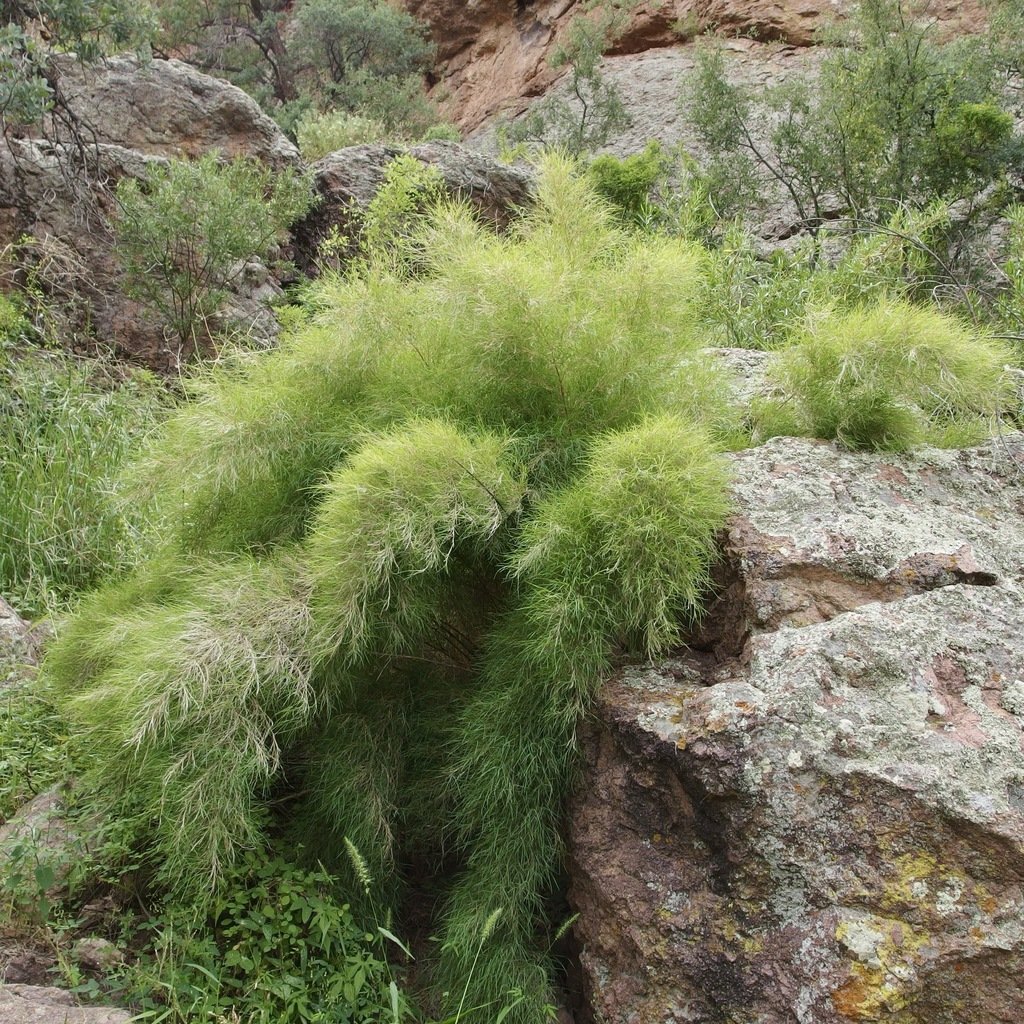Muhlenbergia dumosa
Bamboo Muhly
Family: Poaceae
A bamboo-looking grass which is normally 3-4’ tall and wide but has been recorded at much larger dimensions in the wild.
Full sun to shade, more water in sunnier spots but will look nicer. Hardy to 0°F but may turn brown from the cold. Plants in low desert are mostly evergreen, especially if sufficiently watered.
Great habitat plant, good for tortoise enclosures (they like to hang out under the plants, and the grass is soft and attractive to them). Birds like this plant for nesting materials. Native grasses are extremely important plants for wildlife: as nesting material for birds as well as native bees and other insects, as habitat for many organisms, and as food: adult insects eat the foliage, granivorous birds depend on many species for seeds, and most grass species are used as larval hosts for many species of butterflies and moths, especially skippers. Many bee species collect the pollen of many species of grasses. All can be used for desert tortoise enclosures, though the more spreading types are better for keeping up with a tortoise appetite.
Grasses also play an important role in the ecology of soil, and because they are monocots, they can be planted close to other species of plants (the nature of the root systems of monocots renders them less imposing on neighboring plants). They hold soil down and help prevent erosion. Many species are pioneer plants that convert disturbed soils into hospitable places for other plants.
Used, after boiling, for chest and bowel ailments.
Muhlenbergia is named for Gotthilf Heinrich Ernst Muhlenberg (1753-1815) a clergyman and botanist from Pennsylvania. The specific epithet is from the Latin word 'dumos' meaning "bushy" in refence to the interesting growth habit of this grass. There are 180 species of Muhlenbergia with the greatest number native to the southwestern United States and Mexico; there are also native species in Canada, Central and South America and in Asia.
Found on dry rocky slopes, canyon ledges, canyons, along cliffs below 6,000 ft. in Arizona, south into southern Mexico.
Muhlenbergia dumosa on SEINET
Photo by Sue Carnahan, iNaturalist



